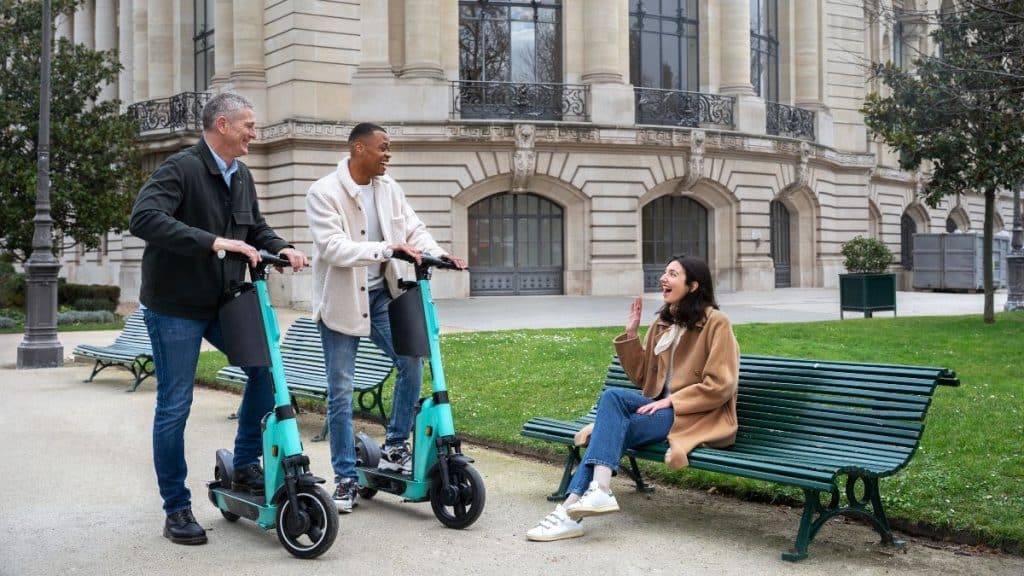The United States is experiencing a revolution in urban transportation. As the cities become more crowded and traffic jams increase, the conventional commuting systems are becoming less efficient and unsustainable. The increase in gas prices, the shortage of parking places, and the development of environmental awareness are making people reconsider their way of moving across the city spaces.
This change is driving the emergence of electric scooters, a small, affordable, and environmentally friendly alternative to cars and public transport. Already these slick two-wheelers are redefining urban commuting in cities around the country, and they are only beginning.
The Rise of Electric Scooters in American Cities
The U.S. e-scooter boom started in 2017, when such companies as Bird and Lime launched dockless scooters in cities. These soon became popular and provided a cheap, quick, and flexible means of transport. Urban residents were glad to have an opportunity to rent and ride scooters with the help of a smartphone app.
Since then, electric scooters have become a common sight in cities like San Francisco, Austin, and Washington D.C., not just as rentals but also as personal vehicles. Companies such as JGH Scooter have stepped in to offer premium electric scooters that meet the demands of daily commuters. Models like the JGH X5 Ultra and JGH X3 are becoming go-to choices for those seeking both performance and style in their urban transport.
Why Electric Scooters Work So Well in Urban Environments
An electric scooter is best suited to urban settings. Most city trips are short, often under five miles and e-scooters are optimized for precisely that kind of distance. Their compact design allows them to navigate traffic easily, park without hassle, and avoid the delays common with larger vehicles.
They also fill the long-desired gap in the so-called last-mile transportation, allowing commuters to reach their final destinations after bus stops or train stations. They do not cause congestion like cars and do not need huge infrastructural investments such as parking garages or fuel stations.
Environmental and Economic
Electric scooters encourage green urban life. They do not emit anything when in use, hence are environmentally friendly to use in daily commuting. With cities trying to minimize their carbon emissions, the use of electric scooters can be increased to a large extent to enhance air quality and minimize noise pollution.
On the economic side, owning a scooter is far less expensive than maintaining a car. There are no fuel costs, minimal maintenance expenses, and no need for insurance or parking fees. High-quality models like the JGH X5 Ultra offer long battery life, sturdy frames, and smooth ride quality making them a dependable investment for frequent riders.
Shared scooter services also offer a low-cost alternative to people who do not wish to own a scooter, particularly in low-income neighborhoods that lack extensive public transportation.
Tech Integration and Smart Mobility
The contemporary electric scooters are highly technological. Most of the models have mobile apps that enable users to monitor rides and battery life and navigate routes. Inbuilt displays, LED lights, and regenerative braking systems also make it more usable and safe.
Companies like JGH Scooter design their products with these smart features in mind. Their scooters include responsive digital dashboards, secure locking systems, and high-capacity batteries meeting the needs of today’s connected commuter.
This integration of hardware and software is turning electric scooters into intelligent transport solutions, not just recreational gadgets.
Regulatory Momentum and Infrastructure Improvements
Cities are adapting to the surge in electric scooter use. From creating designated scooter lanes to developing parking zones and charging stations, municipalities are slowly building the infrastructure needed to support micro-mobility.
Legislation is also evolving to provide clearer guidelines for rider safety, speed limits, and road-sharing. Cities like Portland and Austin are already seeing success by integrating scooters into broader transportation plans, often in partnership with scooter providers and technology firms.
Challenges Still Facing E-Scooter Expansion
Despite growing popularity, electric scooters face several challenges. Safety remains a key concern, particularly when scooters are used without helmets or on crowded sidewalks. Parking misuse can also create pedestrian hazards.
Additionally, regulations vary widely between cities, making it difficult for manufacturers and operators to scale consistently. Standardized rules, better rider education, and improved city planning will be necessary to overcome these issues and support long-term adoption.
The Cultural Shift Toward Sustainable Transportation
Younger generations are leading a shift away from car ownership. For many urban residents, owning a vehicle is expensive, inconvenient, and unnecessary. Instead, they are choosing environmentally friendly alternatives that reflect modern values.
Electric scooters fit perfectly into this lifestyle. Lightweight, tech-enabled, and emission-free, they align with broader goals around sustainability, wellness, and smart living. Brands like JGH Scooter are capitalizing on this momentum by offering products that are not only efficient but also stylish and enjoyable to ride.
Final Thoughts
Electric scooters are not just a passing trend; they represent a fundamental change in how Americans approach urban mobility. They offer an effective solution to pressing challenges in transportation, from environmental impact to traffic congestion.
With continued innovation from companies like JGH Scooter, supportive legislation, and growing public acceptance, electric scooters are poised to become a permanent fixture in the transportation landscape. Whether you’re commuting, running errands, or simply exploring the city, choosing an electric scooter is a smart, sustainable way to get around.
